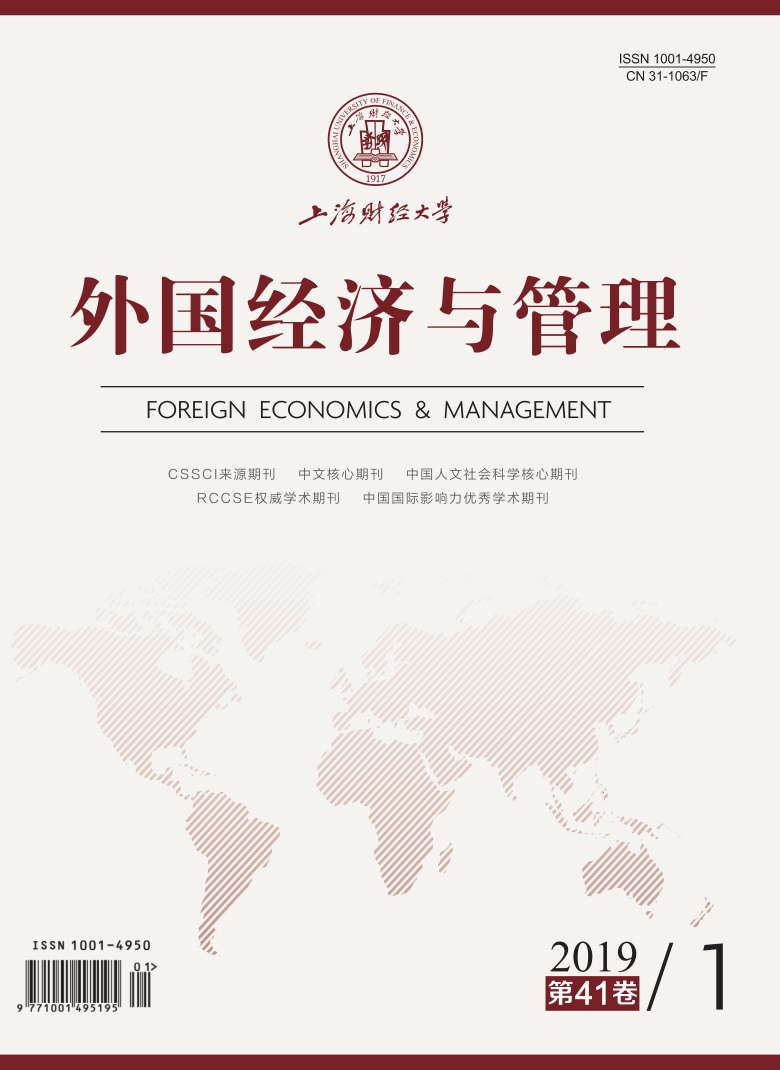体验是特定情境下消费者在与商品、场景、计算机、企业人员或其他消费者互动的过程中形成的独特情感,体验质量是企业衡量体验效果的重要依据。从现有的大量文献来看,不同学科、不同行业、不同情境下体验质量测量的方法存在差异,难以区分;服务质量测量和体验质量测量界定不清,存在混用。体验质量即消费者对互动过程中形成的独特情感的主观评价,体验质量的测量体现为对短期情绪、长期情感的直接测量和间接测量。消费体验又是一个动态过程,应该进行整体体验质量测量,包括体验中的体验质量测量、体验后的体验质量测量和长期体验质量测量。体验质量测量的主要方法包括自我报告法、观察法和心理生理测量法。并没有一种十全十美的工具方法适用于所有的情境,在不同的情境下应该采用多样化、差异化的体验质量测量方法,将定性测量和定量测量方法相结合,将客观标准和主观评价相结合,以保证测量结果的信度和效度。本文旨在厘清不同情境下的体验质量测量方法,讨论不同体验质量测量方法间的联系和区别,以期为企业体验效果的衡量提供方法借鉴,为消费体验研究的学者提供新的思路和方向。
客观标准还是主观评价? 消费者体验质量测量研究述评
摘要
参考文献
3 林丽, 阳明庆, 张超, 等. 产品情感研究及情感测量的关键技术[J]. 图学学报, 2013, (1): 122–127. DOI:10.3969/j.issn.2095-302X.2013.01.023
7 Bauer H H, Falk T, Hammerschmidt M. eTransQual: A transaction process-based approach for capturing service quality in online shopping[J]. Journal of Business Research, 2006, 59(7): 866–875 DOI:10.1016/j.jbusres.2006.01.021
8 Brockmyer J H, Fox C M, Curtiss K A, et al. The development of the game engagement questionnaire: A measure of engagement in video game-playing[J]. Journal of Experimental Social Psychology, 2009, 45(4): 624–634 DOI:10.1016/j.jesp.2009.02.016
9 Chang T Y, Horng S C. Conceptualizing and measuring experience quality: The customer’s perspective[J]. The Service Industries Journal, 2010, 30(14): 2401–2419 DOI:10.1080/02642060802629919
10 Collier J E, Bienstock C C. Measuring service quality in e-retailing[J]. Journal of Service Research, 2006, 8(3): 260–275 DOI:10.1177/1094670505278867
11 Csikszentmihalyi M, Larson R. Validity and reliability of the experience-sampling method[J]. The Journal of Nervous and Mental Disease, 1987, 175(9): 526–536 DOI:10.1097/00005053-198709000-00004
12 Fassnacht M, Koese I. Quality of electronic services: Conceptualizing and testing a hierarchical model[J]. Journal of Service Research, 2006, 9(1): 19–37 DOI:10.1177/1094670506289531
13 Jackson S A, Marsh H W. Development and validation of a scale to measure optimal experience: The flow state scale[J]. Journal of Sport and Exercise Psychology, 1996, 18(1): 17–35 DOI:10.1123/jsep.18.1.17
14 Kahneman D, Krueger A B, Schkade D A, et al. A survey method for characterizing daily life experience: The day reconstruction method[J]. Science, 2004, 306(5702): 1776–1780 DOI:10.1126/science.1103572
15 Karapanos E, Martens J B, Hassenzahl M. Reconstructing experiences with iScale[J]. International Journal of Human-Computer Studies, 2012, 70(11): 849–865 DOI:10.1016/j.ijhcs.2012.06.004
16 Kim H, Choi B. The influence of customer experience quality on customers’ behavioral intentions[J]. Services Marketing Quarterly, 2013, 34(4): 322–338 DOI:10.1080/15332969.2013.827068
17 Kim J, Fesenmaier D R. Measuring emotions in real time: Implications for tourism experience design[J]. Journal of Travel Research, 2015, 54(4): 419–429 DOI:10.1177/0047287514550100
18 Klaus P, Maklan S. Towards a better measure of customer experience[J]. International Journal of Market Research, 2013, 55(2): 227–246 DOI:10.2501/IJMR-2013-021
19 Lemke F, Clark M, Wilson H. Customer experience quality: An exploration in business and consumer contexts using repertory grid technique[J]. Journal of the Academy of Marketing Science, 2011, 39(6): 846–869 DOI:10.1007/s11747-010-0219-0
20 Lemon K N, Verhoef P C. Understanding customer experience throughout the customer journey[J]. Journal of Marketing, 2016, 80(6), 69–96 DOI:10.1509/jm.15.0420
22 Mauss I B, Robinson M D. Measures of emotion: A review[J]. Cognition and Emotion, 2009, 23(2): 209–237 DOI:10.1080/02699930802204677
24 Oliver R L. Cognitive, affective, and attribute bases of the satisfaction response[J]. Journal of Consumer Research, 1993, 20(3): 418–430 DOI:10.1086/jcr.1993.20.issue-3
25 Orenga-Roglá S, Chalmeta R. Social customer relationship management: Taking advantage of Web 2.0 and big data technologies[J]. SpringerPlus, 2016, 5: 1462 DOI:10.1186/s40064-016-3128-y
27 Parasuraman A, Zeithaml V A, Malhotra A. E-S-QUAL: A multiple-item scale for assessing electronic service quality[J]. Journal of Service Research, 2005, 7(3): 213–233 DOI:10.1177/1094670504271156
28 Park J, Han S H, Kim H K, et al. Modeling user experience: A case study on a mobile device[J]. International Journal of Industrial Ergonomics, 2013, 43(2): 187–196 DOI:10.1016/j.ergon.2013.01.005
30 Prahalad C K, Ramaswamy V. Co-creation experiences: The next practice in value creation[J]. Journal of Interactive Marketing, 2004, 18(3): 5–14 DOI:10.1002/dir.20015
31 Robinson M D, Clore G L. Episodic and semantic knowledge in emotional self-report: Evidence for two judgment processes[J]. Journal of Personality and Social Psychology, 2002, 83(1), 198–215 DOI:10.1037/0022-3514.83.1.198
32 Roto V, Vermeeren A, Väänänen-Vainio-Mattila K, et al. User experience evaluation – Which method to choose?[A]. Campos P, Graham N, Jorge J, et al. Human-computer interaction – INTERACT 2011[C]. Berlin, Heidelberg: Springer, 2011.
33 Sauro J, Lewis J R. Quantifying the user experience[M]. Cambridge: Morgan Kaufmann, 2012.
34 Verhoef P C, Neslin S A, Vroomen B. Multichannel customer management: Understanding the research-shopper phenomenon[J]. International Journal of Research in Marketing, 2007, 24(2): 129–148 DOI:10.1016/j.ijresmar.2006.11.002
35 Wästlund E, Otterbring T, Gustafsson A, et al. Heuristics and resource depletion: Eye-tracking customers’ in situ gaze behavior in the field[J]. Journal of Business Research, 2015, 68(1): 95–101 DOI:10.1016/j.jbusres.2014.05.001
36 Wolfinbarger M, Gilly M C. eTailQ: Dimensionalizing, measuring and predicting etail quality[J]. Journal of Retailing, 2003, 79(3): 183–198 DOI:10.1016/S0022-4359(03)00034-4
37 Yamauchi T, Xiao K C. Reading emotion from mouse cursor motions: Affective computing approach[J]. Cognitive Science, 2018, 42(3): 771–819 DOI:10.1111/cogs.2018.42.issue-3
引用本文
王新新, 李震. 客观标准还是主观评价? 消费者体验质量测量研究述评[J]. 外国经济与管理, 2019, 41(1): 127-140.
导出参考文献,格式为:
上一篇:公司股价崩盘风险影响审计费用吗?






 15888
15888  14256
14256

